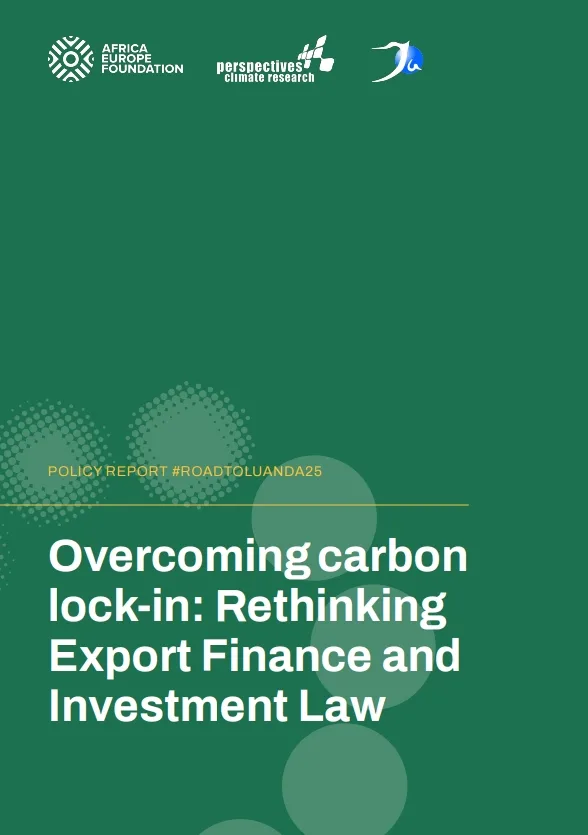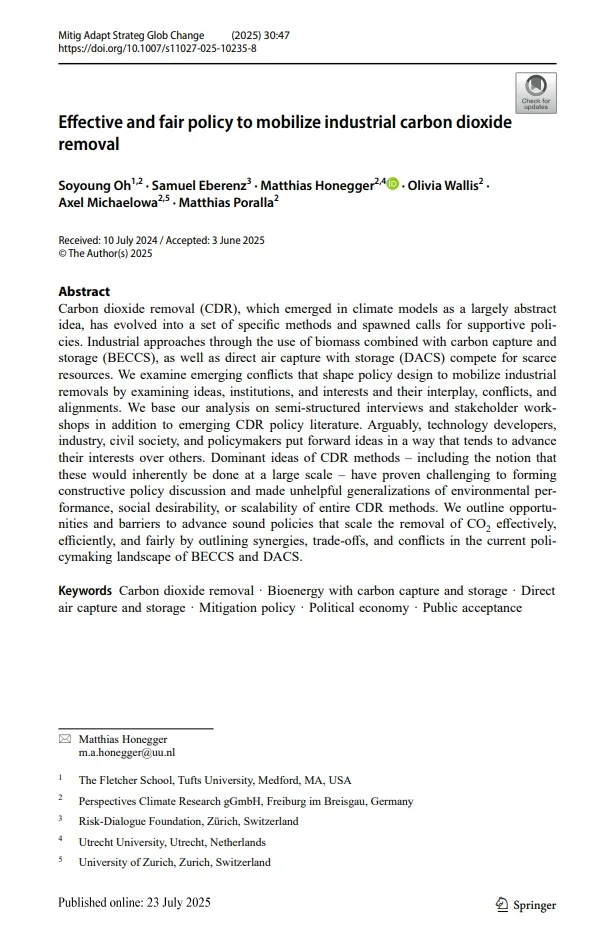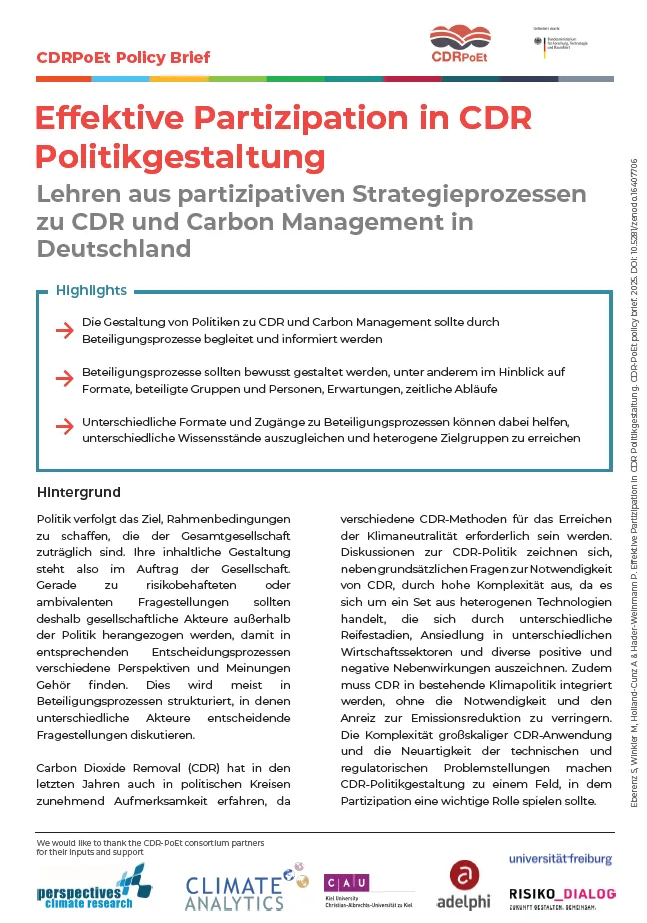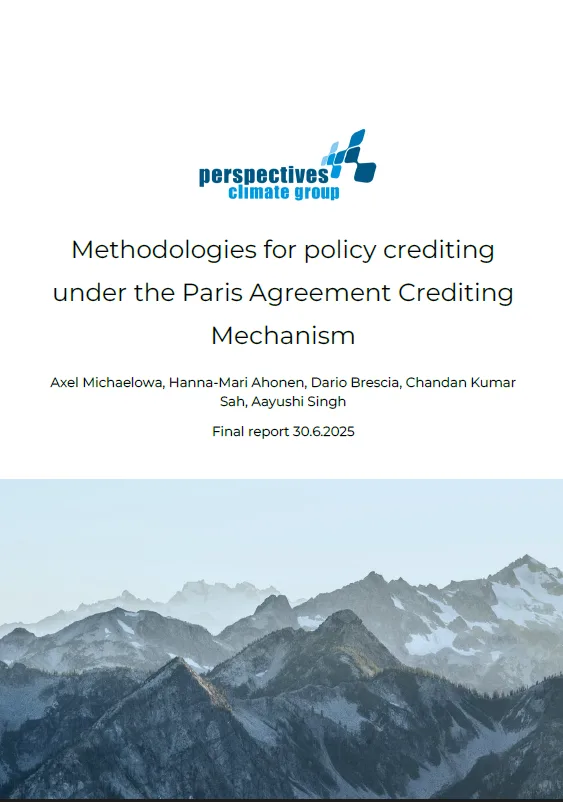Publications >>
International Governance of Climate Engineering. Information for policymakers
Publication Date: 06-2021
Some climate engineering technologies are being developed to remove CO2 from the atmosphere (carbon dioxide removal, CDR), which is expected to contribute to reducing and preventing climate change. Some other technologies (solar radiation modification, SRM) would artificially cool the planet and could reduce some symptoms and risks of climate change. Meaningful steps may need to be taken soon to lay a foundation for a decision process regarding research, policy, regulation and possible use.
Driven by questions and needs from the international policymaking community to better understand the potential benefits as well as opportunities, risks, uncertainties and other challenges of CDR and SRM, at both technical and governance levels, this report reviews and compares technologies and their potential contributions, costs, risks, uncertainties, before surveying the current legal and institutional landscape of governance regarding climate engineering. It then addresses trade-offs between risks and discusses possible options for international governance, including criteria for evaluating options. The need for more inclusive approaches and the pros- and cons of institutional fragmentation are emphasized. Options for sites of international governance are discussed, for various technologies, as well as general principles and specific recommendations to: distinguish between CDR and SRM as well as among CDR techniques; accelerate authoritative, comprehensive, and international scientific assessment; encourage the research, development, and responsible use of some CDR techniques; internationally build capacity for evaluating CDR and SRM; facilitate non-state governance; and explore potential further governance of SRM while remaining agnostic concerning its use.






